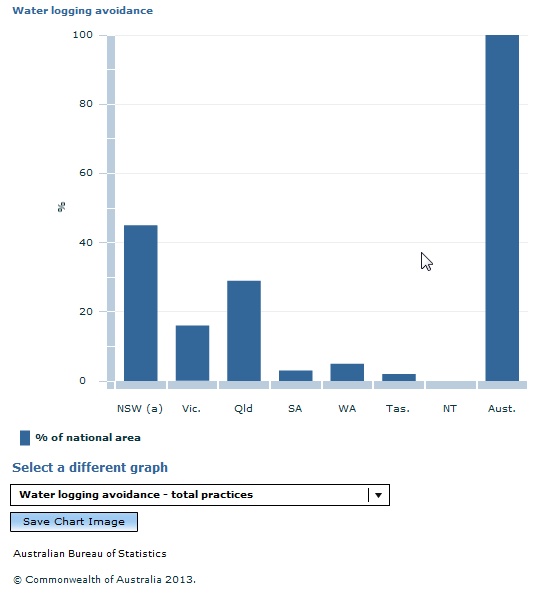4630.0 - Agricultural Resource Management Practices, Australia, 2011-12  Quality Declaration
Quality Declaration
ARCHIVED ISSUE Released at 11:30 AM (CANBERRA TIME) 28/06/2013 First Issue
Page tools:
 Print Page Print Page
 Print All Print All
| ||
|
In 2011-12: NATIONAL AND STATE/TERRITORY
 Footnote(s): (a) Includes ACT. Source(s): Agricultural Resource Management Practices, Australia (cat. no. 4630.0) AUSTRALIAN AGRICULTURAL ENVIRONMENTS (AAE)
Document Selection These documents will be presented in a new window.
|
|
